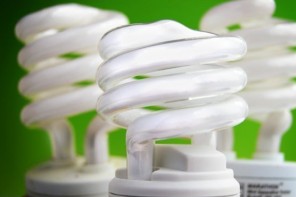The South African National Roads Agency Limited´s (Sanral) may be in the news for reasons many residents of Gauteng province would rather forget, but staff at the parastal´s head office in the capital city of Pretoria have reason to celebrate.
The head office – on Schoeman Street – has been given a Green Star rating by the Green Buildings Council of South Africa (GBCSA), making it the first state entity in South Africa to achieve this.
The four-star rating received is defined as “Best Practice” in the rating system.
The GBCSA is an independent, non-profit organisation that was formed to lead the transformation of the South African property industry to environmental sustainability. According to the organisation, buildings are responsible for a third of all carbon emissions worldwide.
But this building by a government entity demonstrates the country´s commitment to achieving its set results of reducing carbon emissions by 34% by 2020 and 42% by 2025.
The agency of the Department of Transport has come under fire over the last few months for its installation of a system of e-tolls on some of the country´s highways.
The end of April was scheduled for the start of the operations of the tolls, but a court interdict stopped the implementation, at least temporarily.
The complaints from the public and civil society groups have focused on the two main issues of pricing, and Sanral´s non-consultative approach.
How the ratings work
To achieve certification, building owners submit documentation to the GBCSA, who then employ independent assessors to look into the submission and score the building.
The building is then given one of three ratings: four-, five- or six-star.
Brian Wilkinson, CEO of the GBCSA, said: “We would like to offer our congratulations to Sanral, the Department of Transport and the South African government for this ground-breaking achievement as the first parastatal building in South Africa to achieve a Green Star rating.”
Green Star SA rates buildings on nine categories – eight of them environment-orientated, including indoor environmental quality, energy, water, materials and emissions, with the ninth category being innovation.
“The Green Star SA rating tool sets out specific targets (credits) in each environmental category, and buildings are awarded points for each credit that they comply with. The total points will determine the building´s Green Star SA rating,” said Wilkinson.
How Sanral´s building works
The building includes a green roof planted with water-wise succulents, solar-generated hot water for a fresh air heating system, and a two-layered facade that increases natural light and views whilst decreasing heat build up.
“Energy is a major focus, and as such, points earned in this category carry significant weight in the Green Star SA rating tool. Projects are rewarded for reducing their energy consumption. But there is a wide number of other initiatives that go into a rating,” said Wilkinson.
Also in the building´s features is a specialised outer shading layer, which provides essential sun screening.
The air-conditioning system consists of two air-cooled reverse cycle chillers with a combined capacity of approximately 75% of the peak building design cooling load.
In summer these chillers produce ice in the evening that helps with cooling during the day and in the winter; they run as heat pumps to meet the heating requirements.
The building team for Sanral included Activate Architecture; Koor Dindar Mothei Quantity Surveyors; Plantech Electrical and Mechanical Consulting Engineers; Civil Concepts and the project manager and principal agent, Rouillard Consulting.
“Green building offers one of the simplest, most immediate and cost effective ways to reduce human generated carbon emissions – it is essentially the ´low hanging fruit´ – and it is through the efforts made with buildings such as the Sanral office that South Africa will begin to move towards our commitment of reduced carbon emissions,” said Wilkinson.
Encouraging companies to go green
Late in 2011, the Industrial Development Corporation (IDC) and German development bank Kfw launched the R500-million (US$64-million) Green Energy Efficiency Fund.
The IDC is a national development finance institution set up to promote economic growth and industrial development.
The fund provides loans with favourable terms for small to medium-sized enterprises that use energy-efficient equipment and technologies, reduce emissions and use renewable resources.
To qualify, companies have to have a turnover of R51-million ($6.6-million) or less, hold R55-million ($7-million) in assets and employ no more than 200 people.
Green universities too
Higher education and training minister Blade Nzimande launched the African Green Campus Initiative at the University of Cape Town in the Western Cape on 21 April 2012.
The initiative aims to promote environmental sustainability and climate change-mitigating projects at college and university campuses around the country.
“This initiative comes at the right time as issues of environmental sustainability and climate change have come to occupy centre-stage in our country and globally,” said Nzimande at the launch.
“It will provide awareness and capacity development training for students and staff who will then be required to initiate green campus programmes and champion projects that will promote environmental sustainability.”
Words by Ray Maota via Media Club South Africa










